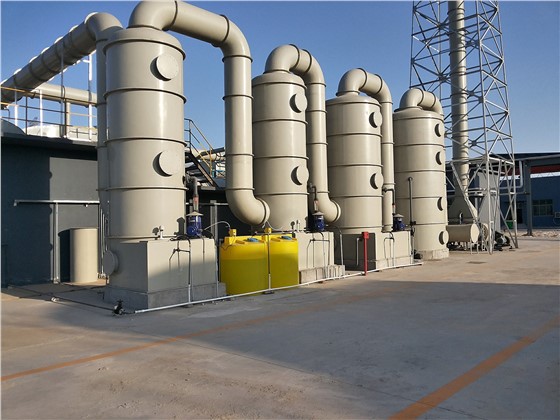The petrochemical industry is a major contributor to atmospheric pollution, primarily due to the emission of volatile organic compounds (VOCs) and other malodorous gases during production, storage, and transportation. These exhaust gases are not only unpleasant but also toxic, posing serious threats to human health, ecological systems, and public safety.
At Chaori Purification, we believe it’s critical to understand the composition and risks of these emissions in order to design targeted, effective treatment systems. Below, we outline the sources, dangers, and available technological solutions for petrochemical waste gas treatment.

Sources and Composition of Petrochemical Exhaust Gases
In petrochemical processing, malodorous emissions are generated from:
- Physical and chemical reactions during synthesis or cracking processes
Leakage and evaporation from storage tanks, reactors, pipeline systems
- Material loading, unloading, and transport operations
These emissions often contain a complex mix of hazardous compounds, such as:
- Hydrocarbons (e.g., benzene, toluene, xylene)
- Sulfur compounds (e.g., hydrogen sulfide, mercaptans)
- Nitrogen compounds (e.g., ammonia, amines)
- Aldehydes, ketones, and acids
-
Potential Hazards of VOCs in the Petrochemical Industry
Impact on Humans
Petrochemical VOCs can have neurotoxic, hepatotoxic, and nephrotoxic effects. Long-term exposure may lead to:
- Respiratory system irritation
- Liver and kidney dysfunction
- Central nervous system damage
- Increased risk of cancer (especially due to benzene and formaldehyde)
Impact on Plants
VOCs can disrupt enzyme activity in plant cells, impairing photosynthesis and nutrient transport. This leads to reduced growth, poor resistance to pests, and lower yield.
Impact on Animals
These gases may cause respiratory irritation, behavioral abnormalities, or chronic illness in animals living near industrial zones.
Treatment Solutions for Petrochemical Waste Gases
1. High-Concentration VOC Treatment Technologies
Designed for emissions with VOC concentrations typically >1000 mg/m³:
- Wet Scrubbing (Absorption Tower)
Acidic or alkaline scrubbing liquids react with specific pollutants (e.g., H?S, ammonia).
- Catalytic Combustion
Uses precious metal catalysts to oxidize VOCs at lower temperatures, turning them into CO? and water.
- Direct Thermal Oxidation
Burns the waste gases at high temperatures (700–1200°C), effective but energy-intensive.
2. Medium-to-Low Concentration VOC Treatment Technologies
For exhaust streams with VOC concentrations between 50–1000 mg/m³:
- Activated Carbon Adsorption
VOCs are captured on the surface of porous carbon; suited for intermittent operations and low-flow systems.
- Biological Treatment (Biofilters/Bioscrubbers)
Microorganisms degrade VOCs in moist environments; ideal for odorous, biodegradable compounds.
- Condensation + Recovery Systems
Recover useful solvents via cooling and condensation, often combined with other methods.
- Integrated Systems (e.g., Activated Carbon Adsorption + Steam Desorption + Catalytic Oxidation)
A combination of methods improves efficiency and resource recovery while minimizing emissions.
Chaori’s Expertise in Petrochemical Exhaust Solutions
At Jiangsu Chaori Environmental Protection Equipment Co., Ltd., we provide:
- Tailor-made VOC treatment systems
- Turnkey solutions including design, manufacturing, and on-site commissioning
- Advanced units like packed tower scrubbers, RTOs, biofilters, and modular adsorption systems
Our systems are widely used in:
- Oil refineries
- Synthetic resin plants
- Fertilizer & ammonia plants
- Chemical storage terminals
Want to learn more about tackling VOCs in petrochemical processes?
Looking for an expert to help select the right treatment system?
Contact Chaori Purification today—your trusted partner in industrial air pollution control.

